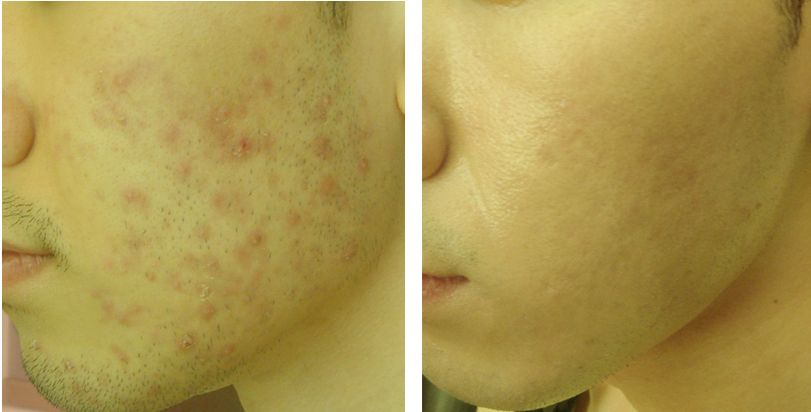
It isn’t breaking news that acne scars can be rather unsightly and embarrassing. They are generally caused by severe acne that may or may not still be plaguing you. The bottom line is, living with acne scars is not fun, and if anything could be done about it, most people would jump on the opportunity to jump on this opportunity immediately. The thing is, not all acne scars are created equal, and not all treatment options are viable for each type of acne scar.
There are different types of acne scars? Yes. In fact, there are four distinct varieties. These are boxcar scars, hypertrophic scars, rolling scars, and ice pick scars. We will discuss each of these in some detail momentarily. If is first worth noting that many people have reduced the appearance of their scarring, so there is definitely hope for you. That having been said, let’s very briefly discuss each of these 4 main types of acne scarring…
The 4 Main Types of Acne Scars:
1. Boxcar Acne Scars. These are egg-shaped depressions which will vary in depth, depending upon the severity of your acne. These generally occur on the face, around the temples and cheeks primarily.
2. Hypertrophic Acne Scars. These can actually arise as the result of other skin conditions, as well. Most often, however, acne is the culprit. These occur as little raised red spots, or bumps. Luckily, this type of scarring can actually disappear on its own, but can certainly be unsightly when it is in “full bloom.” These scars can typically be found anywhere on the body.
3. Rolling Acne Scars. These scars will most often take place on the forehead and cheeks, and are actually quite deep. In fact, they develop within the deeper layers of skin and resemble red, rolling hills. These cannot be treated using lasers or dermabrasion, as they are simply too deeply embedded in the skin. The most effective treatment option for this type of scarring is subcision.
4. Ice Pick Acne Scars. This type of scarring usually appears to carve out a little pit in the skin. These pits can be deep or shallow, depending upon the severity of acne. Most commonly occurring on the cheeks, these scars appear uneven or “sharp” and can develop into depressed fibrotic scarring when aggravated.
Unfortunately, treating the various types of acne scarring isn’t an easy thing to go about doing. There is a lot of research you’ll need to do. First, you’ll obviously need to identify which type or types of scarring you are suffering from. Then, you’ll need to research the various treatment options for that particular type of scarring. Next, you’ve got to test the recommended treatment options to see if they work for your individual physiology. Finally, you need to perform as much trial and error as it takes to pinpoint the treatment that actually works for you.
This can be expensive and you may have to endure some side effects along the way. Of course, once the scarring has disappeared and you are left with clean, clear, healthy, and youthful looking skin, it will have all been worth it. And who knows? You may just get lucky and respond 100% favorably to the very first treatment you try!
Common treatment options for acne scarring include various medicated creams and topicals, laser resurfacing, dermabrasion, chemical peels, punch treatments, and subcision. Any qualified dermatologist should be able to examine your particular case and point you in the right direction.





